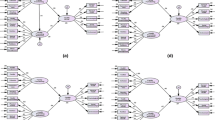Abstract
This paper aims to evaluate how the Korean family fares in terms of itsquality of life. Specifically, it examines the perceived quality of relationships among family members in relation to the objective conditions of family life, and the decision-making process that takes place therein. According to National Census data, family size is becoming smaller, and the divorce rate is increasing, while the marriage rate is decreasing. The nuclear two-parent family has changed little in its relative size, while the incidence or size of the three-generation extended family has continued to decrease. At the same time, there has been a sharp increase in single-person households. According to a recent survey of college students, Korean families, despite the widely held notion of a hierarchical Confucian influence, enjoy a liberal and flexible family environment in everyday life. Such a family atmosphere, together with a large family income, is found to contribute to greater qualities of family life, involving such elements as love, caring, recognition, and acceptance.
Similar content being viewed by others
REFERENCES
Chang, H.S. and H.O. Kim: 1994, 'Defining 'Quality of life' from the perspective of the family', Journal of Health and Social Welfare 14(2), pp. 62-81.
Chang, H.S. et al.: 1994, Quality of Life in Family Dimension and Policy Tasks (Korean Institute of Health and Social Affairs).
Choi, Jae Suk: 1976, Social characteristics of Koreans (Gamun Sa, Seoul).
Cohen, E.H., R.A. Clifton and L.W. Roberts: 2001, 'The cognitive domain of the quality of life of university students: A re-analysis of an instrument', Social Indicators Research 53, pp. 63-77.
Crowley, M.J. and A.E. Kazdin: 1998, 'Child psychosocial functioning and parent quality of life among clinically referred children', Journal of Child and Family Studies 7(2), pp. 233-251.
Cummins, R.A.: 1996, 'The comprehensive quality of life scale: Theory and development', Health Outcomes Bulletin 6, pp. 18-22.
Cummins, R.A.: 2000, 'Objective and subjective quality of life: An interactive model', Social Indicators Research 52(1), pp. 55-72.
Jeffres, L.W. and J. Dobos: 1995, 'Separating people's satisfaction with life and public perceptions of the quality of life in the environment', Social Indicators Research 34(2), pp. 181-211.
Kang, D.S.: 1991, 'A study on the <Quality of Life Indicators>', Journal of Cheju University 33, pp. 437-459.
Kim, B.G. et al.: 1997, 'Study on changes in quality of life and economic development in Korea: Re-evaluation of quantitative indicators for transition to qualitative growth', unpublished report.
Kim, M.H.: 1993, 'Transformation of family ideology in upper-middles-class families in urban South Korea', Ethonology 32, pp. 69-85.
Keith, K.D., M. Yamamoto, N. Okita and R.L. Schalock: 1995, 'Cross-cultural quality of life: Japanese and American college students', Social Behavior and Personality 23(2), pp. 163-170.
Lee, Suni: 1998, 'Marital status, gender, and subjective quality of life in Korea', Development and Society 27, pp. 35-49.
Lever, J.P.: 2000, 'The development of an instrument to measure quality of life in Mexico city', Social Indicators Research 50(2), pp. 187-208.
Lloyd, K.: 1996, 'Planning for leisure: issue of quality of life', Social Alternatives 15(2), pp. 19-22.
Park, E.S. et al.: 1998, 'Study on establishing a model of predicting the quality of life in family of chronic patients', Korean J. of Nusing 28(2), pp. 344-356.
Park, I.H. and L.J. Cho: 1995, 'Confucianism and the Korean family', Journal of Comparative Family Studies 26, pp. 117-134.
Palomar, J.: 1999, 'The relationship between family functioning and quality of life in families with an alcoholic member', Salud Mental 22(6), pp. 13-21.
Rettig, K.D., S.M. Danes and J.W. Bauer: 1991, 'Family life quality: Theory and assessment in economically stressed farm families', Social Indicators Research 24, pp. 269-299.
Rettig, K.D. and R.D. Leichtentritt: 1999, 'A general theory for perceptual indicators of family life quality', Social Indicators Research 47(3), pp. 307-342.
Sam, D.L.: 2001, 'Satisfaction with life among international students: An exploratory study', Social Indicators Research 53, pp. 315-337.
Schumm, W.R., E.E. McCallum, M.A. Bugaighis, A.P. Jurich and S.R. Bollman: 1986, 'Characteristics of the Kansas family life satisfaction scale in a regional sample', Psychological Reports 58, pp. 975-980.
Shin, Y.H. and K.S. Chang: 1997, Korean family and culture of community in 21 Century (Jisik, Seoul).
Yang, O.K.: 2001, 'Study on college students' perception of family', Korean Journal of Family Social Work 7, pp. 175-199.
Yang, O.K. 2000, 'Qualitative research on the concepts of family in Korea', Korean Journal of Family Social Work 6, pp. 69-99.
Author information
Authors and Affiliations
Rights and permissions
About this article
Cite this article
Yang, O.K. Quality of Life Across Life Domains: Family Structure and Relations. Social Indicators Research 62, 121–148 (2003). https://doi.org/10.1023/A:1022689016039
Issue Date:
DOI: https://doi.org/10.1023/A:1022689016039




